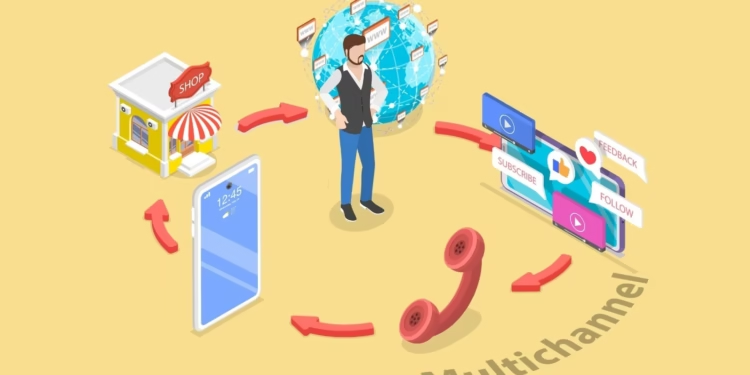In today’s highly digital world, a brand’s presence across various channels can be the difference between obscurity and recognition. A multi-channel marketing strategy becomes essential as consumer interactions morph and diversify across different media platforms.
Understanding Multi-Channel Marketing and Its Scope
Multi-channel marketing refers to the practice of interacting with customers using a combination of indirect and direct communication channels. It allows customers to take action in response—preferably to buy your product or service—using the channel of their choice. This strategy moves beyond traditional marketing by embracing the complexity of modern communication and establishing a more dynamic relationship with consumers.
The scope of multi-channel marketing includes various platforms like social media, email, websites, mobile applications, and even traditional means such as print ads and retail locations. It’s about meeting the customers wherever they are and providing a seamless experience across all channels.
When analyzed correctly, multi-channel marketing data provides deep insights into customer behavior. These analytics allow businesses to tailor their strategies to better match customer preferences, which can result in more effective marketing efforts and a higher return on investment.
Enhancing Brand Presence Across Multiple Platforms
Having a strong brand presence is invaluable in the crowded modern marketplace. As brands vie for consumers’ attention, it’s critical to establish a presence where your audience spends their time. A multi-channel approach ensures your brand can be found across numerous platforms, thus increasing visibility and brand recognition.
Consistency is key when engaging in multi-channel marketing. It’s not just about being present; it’s also about delivering a consistent brand message across all platforms. This consistency strengthens brand identity, making it more likely for consumers to remember and choose your brand over competitors.
Optimizing content for each platform is also vital to enhancing brand presence. Platforms differ in format, tone, and audience behavior, and adapting your message accordingly can increase its effectiveness. Tailoring content for each channel respects that platform’s uniqueness and can lead to better engagement rates.
Tapping Into Diverse Customer Segments with Strategic Channel Mix
Alt text: A company that uses a multi-channel marketing strategy
Not all consumers are created equal, and neither are the channels they frequent. A strategic mix of marketing channels allows businesses to reach disparate customer segments where they are most comfortable and receptive. This targeted approach enhances the efficiency of marketing campaigns by connecting with the right audience on the right platform.
Channel diversity also means utilizing modern and traditional digital channels to cast a wider net. Some demographics may still favor print media and television, while younger, tech-savvy consumers are more likely to be reached through social media and online content. A multi-channel strategy encompasses this broad spectrum.
Each channel attracts a specific audience, possessing distinct characteristics and behaviors. By diversifying the channel mix and tailoring the message to suit the channel’s user demographic, businesses can speak more directly to each sub-group within their target market, creating a personal and engaging experience.
Fostering Customer Loyalty Through Integrated Engagement
Customer loyalty doesn’t happen overnight. It’s the result of consistent, positive interactions that create trust and a sense of value. A multi-channel marketing strategy facilitates this by allowing businesses to engage with customers at various points in their journey, creating numerous opportunities to foster loyalty.
Integrated customer engagement implies that each channel synergizes with others to support the customer journey. For example, an inquiry on social media that leads to a seamless service experience via email can demonstrate a brand’s commitment to customer care, thereby building loyalty.
Businesses can also utilize customer data from one channel to personalize experiences on another, showing customers that they are recognized and valued across all touchpoints. Personalization is a key driver in customer satisfaction and can transform casual buyers into loyal customers.
Altogether, a multi-channel marketing strategy presents a powerful opportunity for businesses to amplify their message and build lasting relationships with customers. Through strategic channel selection, consistent messaging, and data-driven optimization, companies can create a seamless and personalized shopping experience that resonates on a deeper level.
















